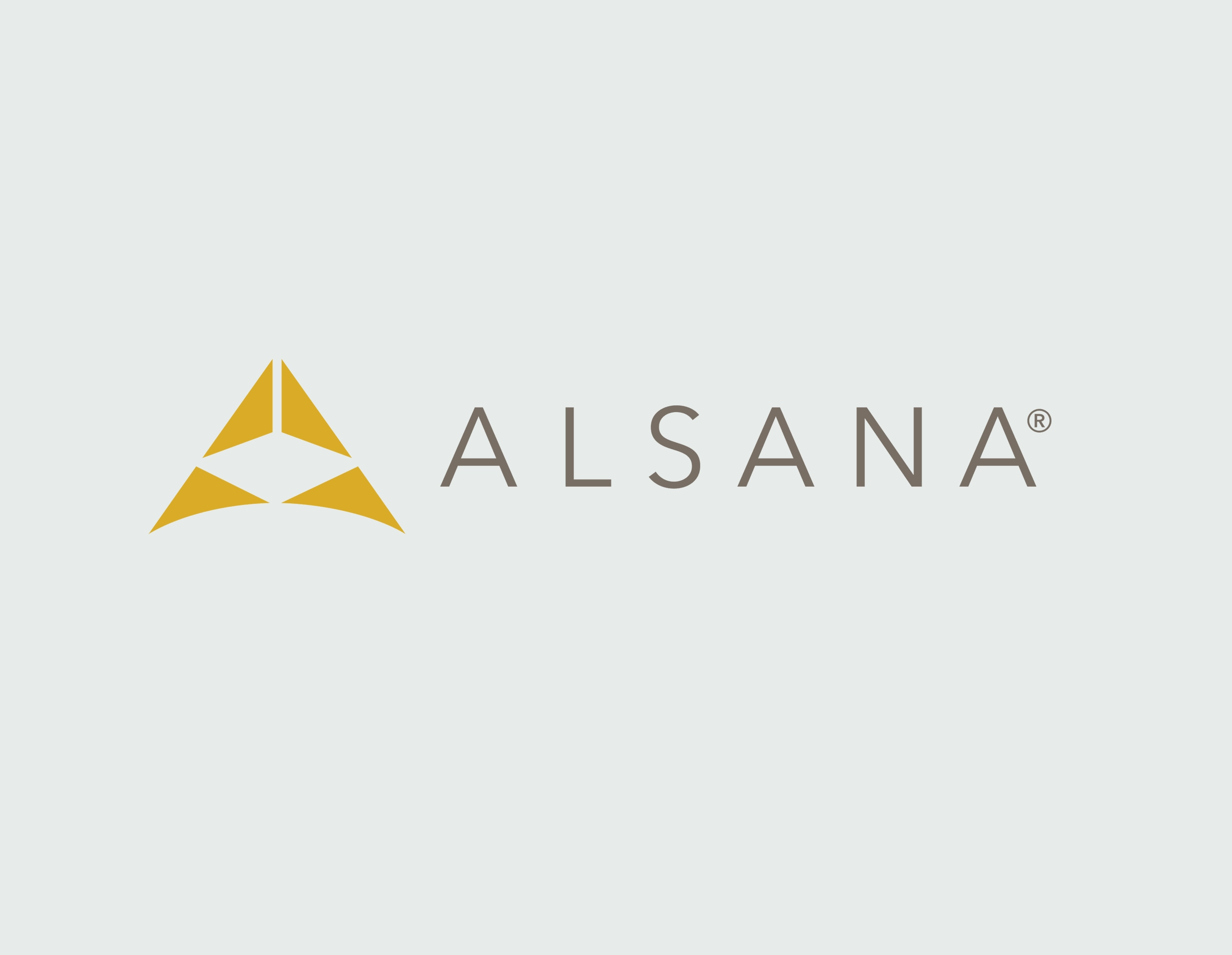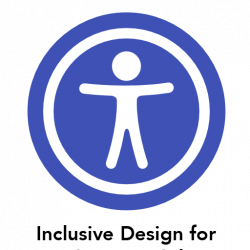ISLANDS OF LOST TOYS:
THE USE OF SANDTRAY IN THE TREATMENT OF EATING DISORDERS
“From the first touch of the sand, there is often a palpable release of tension as the
body begins to find its natural rhythm again.” -Bonnie Badenoch
What is Sandtray Therapy?
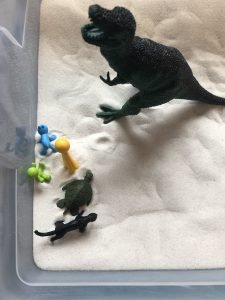
Why Sandtray?
Sandtray is a whole-brained approach that promotes an improved connection between the right and left sides of the brain, releases blocks that are put up through words, and facilitates integration (Flaherty, 2013). The pictures and stories created in the tray access the right brain and stimulate memories and emotions, while the processing of the tray provides visual information to the left brain (Flaherty, 2013). The arrangement of miniatures and stories that are created are representative of the client’s inner world and allows for healing without using words. As the unconscious is at work, it also allows for therapeutic distance, containment, and safety created through the therapeutic relationship, environment, and the space of the tray itself.
Benefits of sandtray include (Homeyer, et. al, 2005):
– It gives expression to non-verbalized emotional issues
-It has a unique kinesthetic quality
– It serves to create a necessary therapeutic distance
-It provides and creates a safe place for a reaction to occur
-It is an inclusive experience within relationships
-It provides boundaries and limits, which promotes safety
-It provides a unique setting for the emergence of therapeutic metaphors
-It is effective in overcoming resistance
-It provides a needed and effective communication for clients with poor verbal skills
-It cuts through verbalization as a defense
-It creates a place to experience control
-Transference may be effectively addressed
-Deeper intrapsychic issues may be accessed more thorough
Sandtray Use with Treatment of Eating Disorders
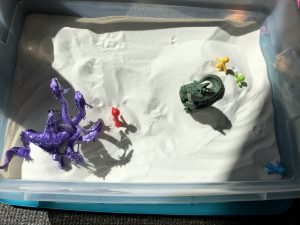
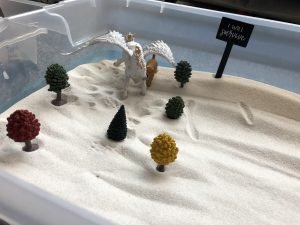
Here at Alsana in St. Louis, all of our therapists have basic training in sandtray with a few having more advanced training. Sandtray can be utilized at all levels of care in individual, family, and group therapies.
Below are several examples of directives and ways sand tray has been used in the therapeutic process:
Individual Therapy
- To explore the client’s internal experience at the beginning of the work. This directive can also be used at different times throughout the client’s stay to assess change and progress.
- Explore family/relationship dynamics of past and present
- Explore client’s different layers (i.e., what I show to the world vs what I feel inside)
- Trauma processing
- During meal/snack sessions to explore different emotions, blocks, etc that come up throughout
- Explore barriers to recovery, relationships, launching, etc
- Explore future goals
- With client’s who struggle with verbal processing
- With client’s who want to remain cognitive as a defense
- Resourcing—A safe place or containment space can be created in the sand and the client can take a picture to use outside of the session. The scene can be recreated in sessions if needed. Miniatures can also be used to represent resources of strength, nurturance, power, etc. The client can take a picture of a miniature(s) or if possible, borrow the miniature if needed as a tangible way to access the resource.
- It can be used to continue the sculpt done in expressive for further processing.
- Sandtray can also be used as a starting ground for modality work or incorporated into modality work such as:
- IFS
- Use miniatures to represent different “parts,” practice internal dialoguing, unblending, etc.
- EMDR
- Use miniatures to represent nurturing/protective figures; create safe place or container
- Somatic Experiencing
- Client’s can track through the body while working in the tray to deepen the experience, etc
- Expressive
- Continuation of sculpt in expressive group, use miniatures to represent different figures, people, feelings and then work to embody
- Art
- Further processing of art agenda, create art depicting feelings after gaining new insight during the sand tray, etc
- IFS
 Family Therapy
Family Therapy
– To visualize and share individual internal experiences
- How each person experiences the relationship dynamics
- Communication within the relationship
- How they would like the relationship to look like and steps to get there.
Group Therapy
- Attachment/Family and Relationships Groups
- Explore the relationship with your primary caregiver
- Parenting styles— how you were parented/how you parent yourself
- Relationship dynamics
- Can be used by facilitator to create a visual of left/right brain and/or neurosequential model of brain development to provide psychoeducation on interpersonal neurobiology
- How relationship dynamics would have to shift to reparent yourself/support your recovery
Body Image Group
- How I feel in my body
- How I feel in the world in my body
- How I perceive others see me in my body
- Body Image timeline
- **How I feel in my body and how it affects my place in the community
- Messages received around masculinity/feminitity
- Addictions Group
- What my addiction looks/feels like
- What is underneath the addiction
- How addiction affects my relationships
- **How the group feels in supporting each other around addictions. What needs to shift?
- Community Dynamics
- **Where everyone feels in the community. What needs to shift to be more supported?
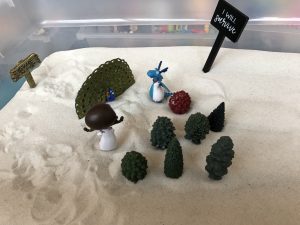
– give both objective/subjective reflections
– witness the vulnerability involved in the creative process
– get a look into the inner world of peers and into each other
-reflect on how they relate to others experiences
– reflect on community dynamics, including cohesion and barriers, while creating a safe and contained place to confront and then process.
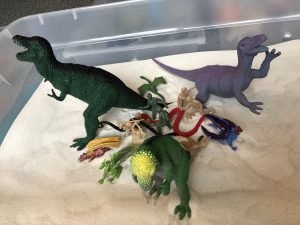
Flaherty, A. (2013, July 23). Sandtray and the Subconscious. Retrieved from
http://southernsandtray.com/sandtray-and-the-subconscious/
Homeyer, L. & Sweeney, D. (2005). Sandtray Therapy. In C.A. Malchiodi (Eds), Expressive Therapies (pp. 162-183). New York, NY: The Guilford Press.

JOIN OUR ONLINE SUPPORT GROUP
Weekly meetings
Fridays at noon / PST

WE ARE HERE TO HELP
Alsana would like to be your eating recovery community..
Our Recommended Articles
Start the road to recovery with Alsana.

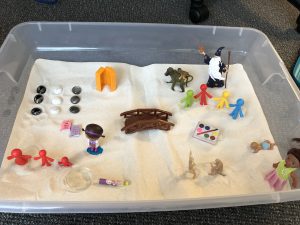 Family Therapy
Family Therapy
